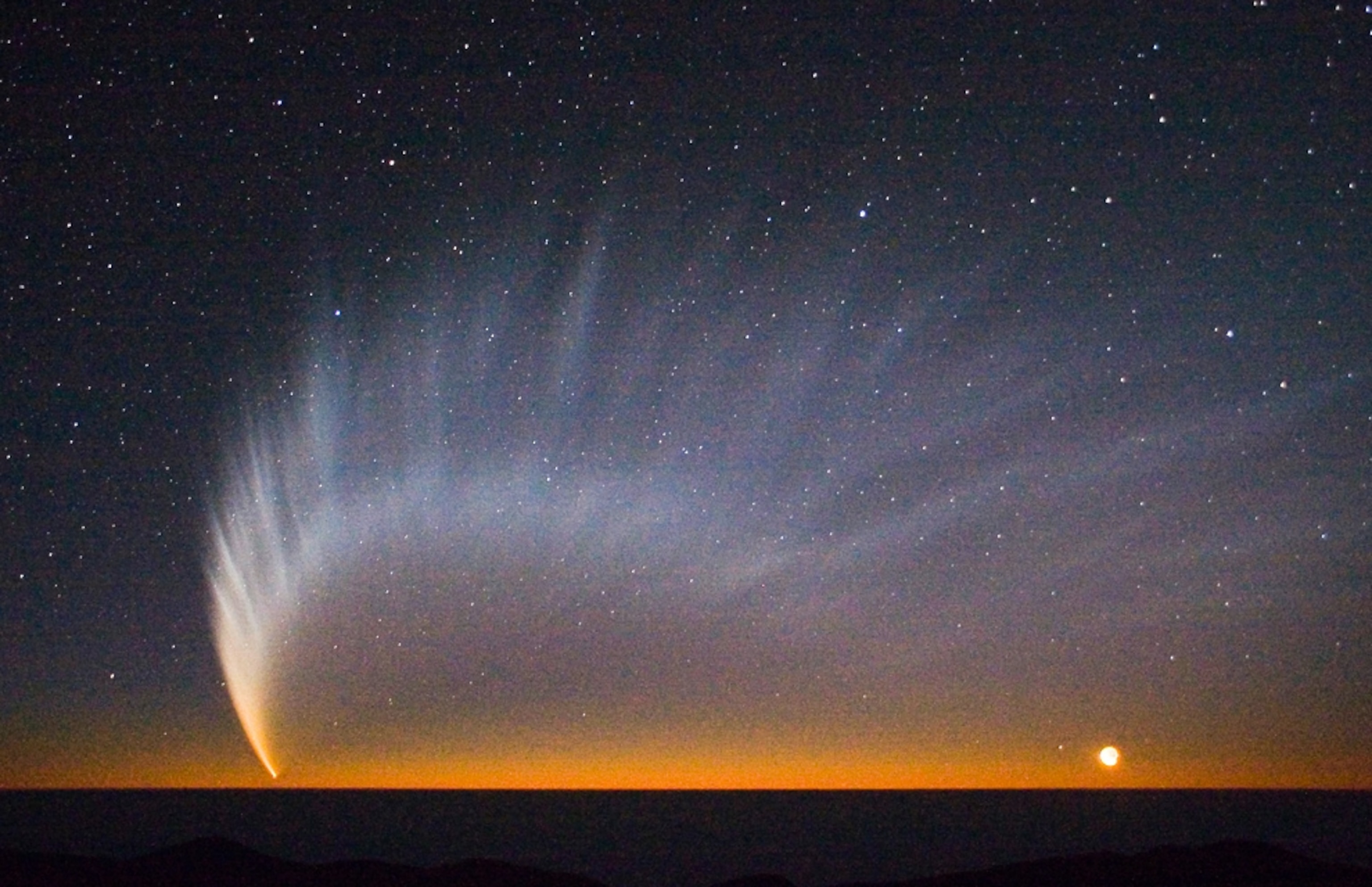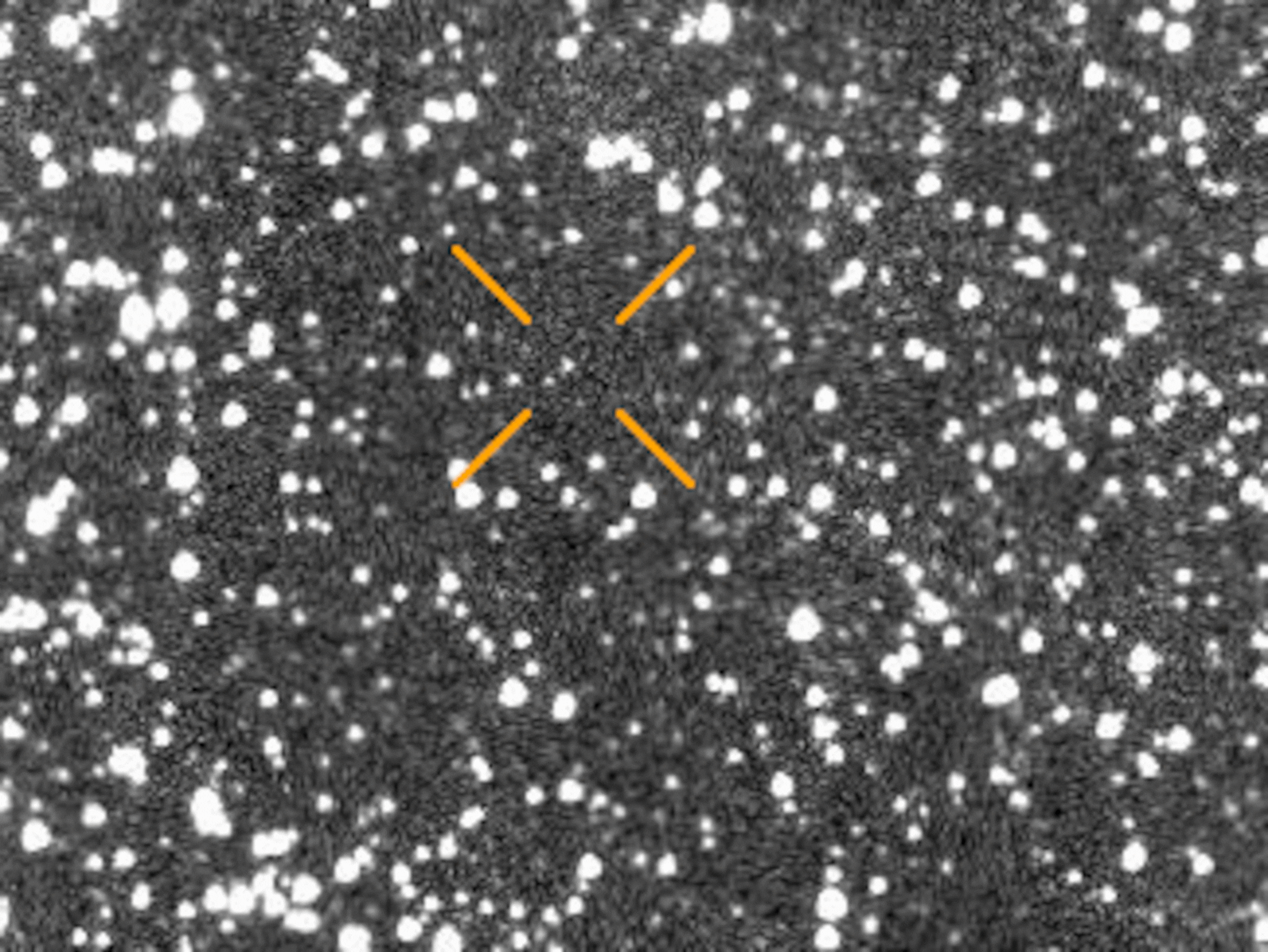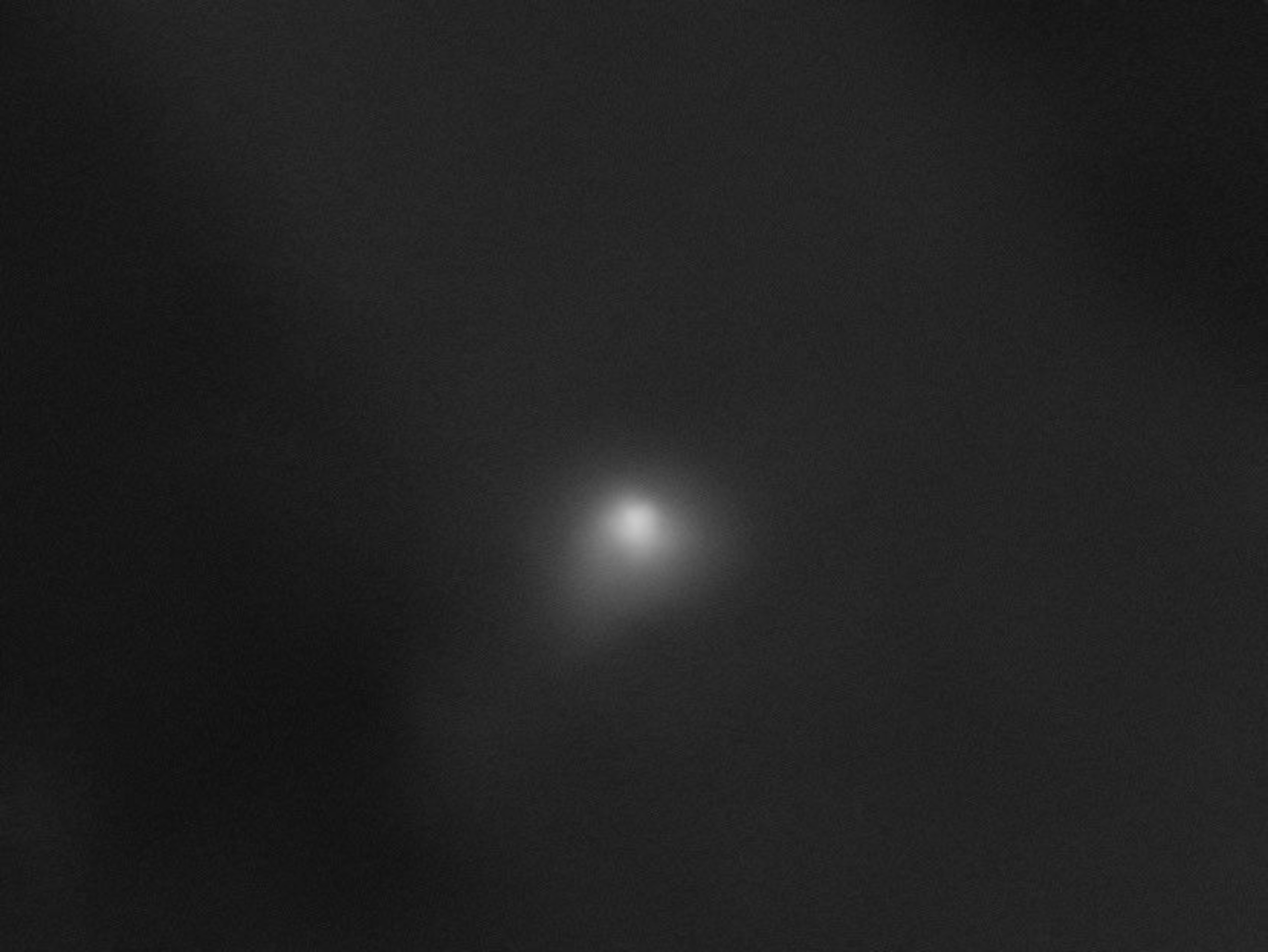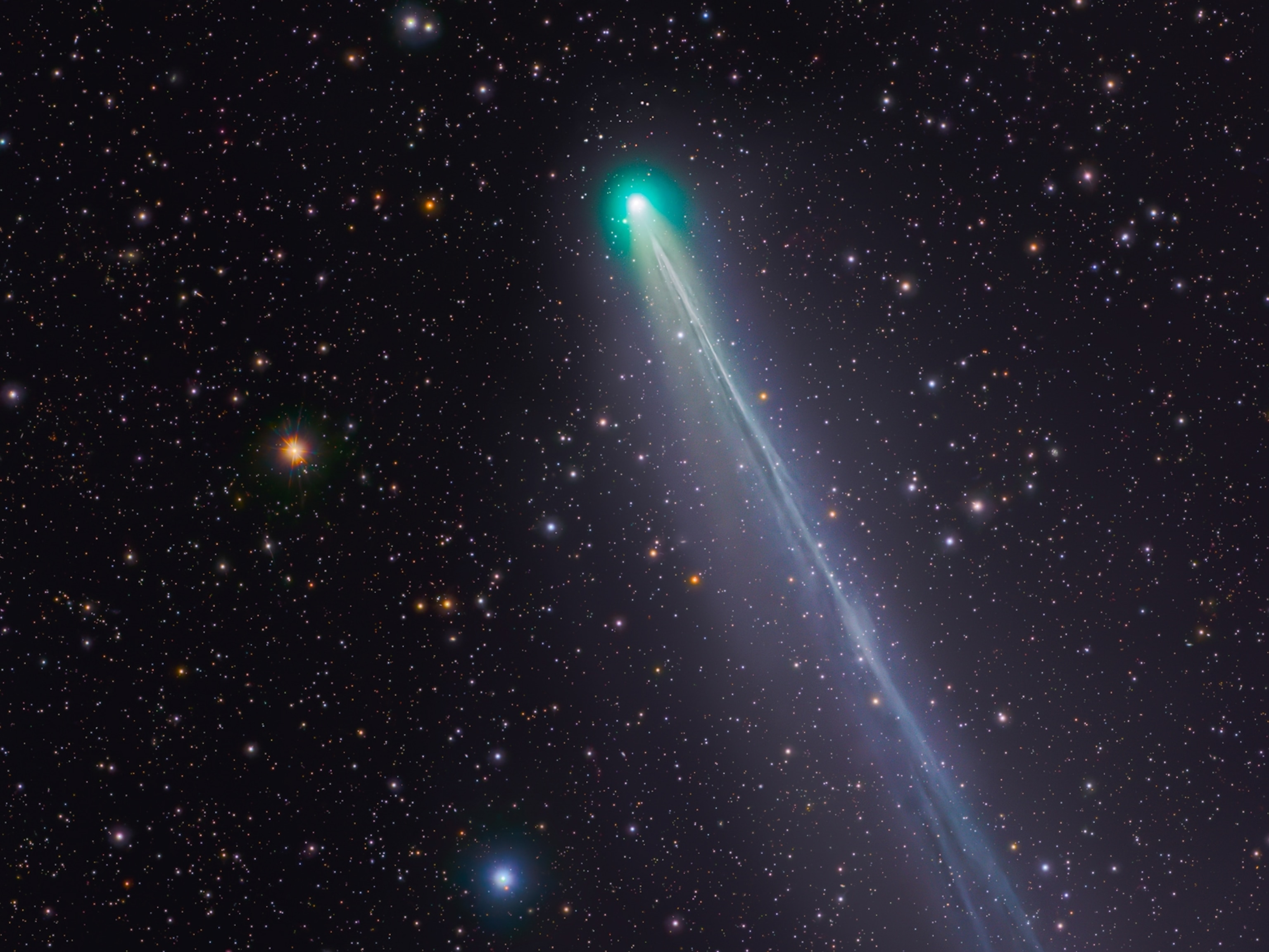
"Biggest" Comet Measured
Comet McNaught is "one of the giants," astronomers say.
The Great Comet of 2007 made an even bigger impression on the solar system than anyone realized, according to a new study that measured the size of the comet's wake.
In January 2007 people around the world watched comet McNaught streak across the sky. It was the brightest comet seen since 1965 and, in some places, was visible to the naked eye in broad daylight. (See a picture of comet McNaught over New Zealand.)
The visible tail was about 35 degrees long, or roughly the same apparent size as 70 full moons lined up in the night sky.
By chance, the European Space Agency's Ulysses spacecraft plowed through the width of the comet's tail in February 2007.
Designed to study the sun's atmosphere, the probe was able to record information on how the comet's passage affected the solar wind, which is actually charged particles constantly streaming from the sun. (Related: "Sun's Mysterious Waves Found; May Be Solar Wind Source.")
When a comet nears the sun, heat vaporizes the space rock's ices, releasing dust, which forms the comet's shining tail. But comets also have invisible tails of charged gases, or plasma, that interact with the solar wind.
Like a boat stirring up a wake, a comet's plasma tail creates "bow waves" in the solar wind on either side of the comet.
Biggest Comet's "Shocking" Tail
In the case of comet McNaught, Ulysses found that the plasma tail slowed the solar wind inside the bow wave to half its normal speed.
The solar wind usually travels at about 435 miles (700 kilometers) a second at that distance from the sun. But inside the comet's tail, the wind was moving at less than 250 miles (400 kilometers) a second.
It took Ulysses a record 18 days to pass through the region of solar wind "shocked" by the comet's tail.
By contrast, in 1996 Ulysses had zipped through the wake of comet Hyakutake in just 2.5 days. Another ESA spacecraft, Giotto, had crossed the tail of Halley's comet in just a few hours.
"This shows that McNaught really presented an enormous obstacle to the solar wind," said Geraint Jones of University College London, who presented the findings today at the 2010 Royal Astronomical Society National Astronomy Meeting in Glasgow, Scotland.
Compared with Halley's comet, McNaught also flung out more than three times as much charged gas, the Ulysses data show.
Comet McNaught "One of the Giants"
In terms of the comet's physical size, astronomers think McNaught's core is less than 15 miles (25 kilometers) wide.
The new data don't give an exact length for the comet's full plasma tail, although Jones and colleagues note that Ulysses was about 139 million miles (224 million kilometers) away from the comet's core when it crossed the tail.
Jones thinks the width of the shocked region around the tail is a better measure of a comet's size, since it's a sign of how much of an impact the object makes on its surroundings.
By that standard, the new data would make comet McNaught the biggest comet yet recorded.
Still, only a handful of comet tails have been measured by spacecraft so far, making it likely that McNaught will lose its crown at some point in the future. (Read about a green, two-tailed comet that recently swung past Earth.)
"There are probably larger ones around," Jones said. "But McNaught is definitely one of the giants."





